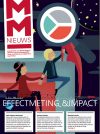Museums and Storytelling
Museums tend to have steady collections of works which generally are explained to visitors in conventional ways and by conventional methods. However it has been proven that people remember more from stories than when facts are given. Storytelling can be a powerful experiential tool for museums for several reasons.
Firstly, powerful storytelling adds layers which appeal to different target groups. Museums often draw visitors from different countries who come from various backgrounds, generations, and cultures. Layering in stories can appeal to these various groups. Layering also gives repeat visitors something new to discover in museum collections every time they come back.
Good stories also create an interaction with visitors because of the differences in perspective of the author and that of the visitors. Different interpretations of the story are possible depending on the personal context and perspective of individuals.
Authenticity is another important aspect of a powerful story which stimulates visitor involvement. By authenticity it is meant not only that a story is historically accurate, but also that it appeals to genuine human emotion. Powerful storytelling helps visitors identify, because it helps people gain a frame of reference and lets them dream or reflect.
Storytelling at the Anne Frank House
In 2007 The Anne Frank House had around 1,002,900 visitors. 25% of the visitors are American tourists who visit the house, mainly because it is labeled as a must see attraction on their excursions through Amsterdam.
The research at the Anne Frank House in 2008 was conducted with qualitative research methods. It is felt that such aspects as experience and involvement cannot be measured purely with quantitative research as it is important to gain a deep insight into the values, emotions, thoughts and feelings of visitors. Qualitative methods that were used to gain insight into the experience and involvement were observations during the visit, exit interviews immediately after the visit and experience reports. An experience report is a qualitative method of research developed at the NHTV. It invites visitors to fill in open ended questions concerning their museum visit with a minimum of 7 days following the visit. Respondents describe the memory of the experience along with the emotions and feelings that took place during the experience in retrospect. It can be assumed that the stronger the experience, the more memorable it would be. By using experience reports over time, transformations, such as a change in involvement with the subject, that take place because of the experience can also be noted.
In the research at the Anne Frank House in 2008, it turned out that some visitors had a prior involvement with the story, for example because of their Jewish heritage, but other visitors did not have any prior involvement, because of lack of knowledge on the subject for example.
Stories can be told explicitly, by word of mouth, or implicitly, for example by objects or photographs. During the research into the involvement of visitors, both implicit and explicit storytelling were taken into consideration. The explicit storytelling used, was a one hour program that was given to visitors prior to visiting the house. In the program the Anne Frank Story and the background information were explained. Also videos were shown with images of war and the events that took place around the Anne Frank story, as well as video where Otto Frank discusses his experiences in an interview. Furthermore, implicit storytelling was used at the end of the program. Participants were invited to take portraits of those characters in the diary with them into the house and pretend that they were them.
Research results
The research results showed that both the explicit and implicit storytelling triggered the experience and stimulated the visitors involvement, even of the visitors, who were not involved with the content of the museum prior to the visit. Visitors were invited to write experience reports some weeks after their visit, to see whether the experience had been memorable. These reports showed that they had had a truly memorable experience.
Museums can trigger an involvement and a memorable experience for even tourists looking for the must see attractions. In this way the museums can export their stories to their visitors home countries in more than one way. Not only because tourists bring in money, but also because visitors who have become involved through their visit will share the stories with friends and relatives back home.
One of the topics of the experience reports was the invitation to the respondents to express their experience in a creative way. The following poem was written by a visitor from the US.
To still believe in the goodness of man,
When they have done all they can
To destroy your spirit, not just your life.
To add to this insane litany of strife,
To learn they did not succeed
Is your story for all to read, again and again and again.
D.P.C.
Museums could use such poems written by visitors to enhance their marketing for example, by creating a space in their digital guest books for visitors to express themselves freely in their own creative ways. Personal poems or stories add an extra dimension of storytelling for visitors to share with each other. It is also a form of co-creation as it lets visitors shape and influence the experience at the museum.
